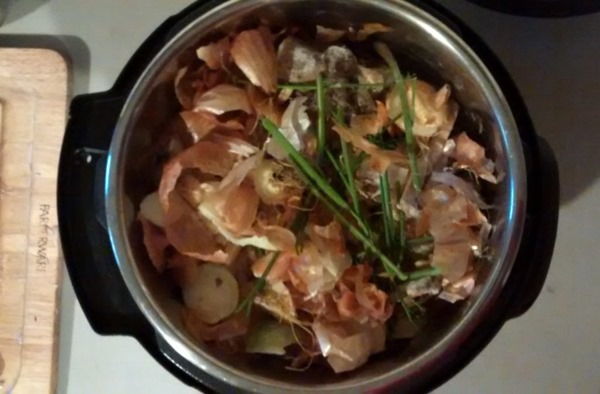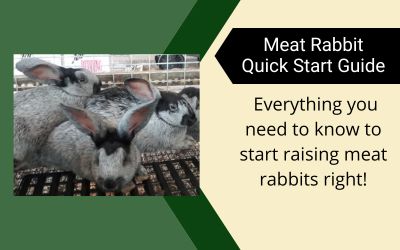After butchering, what do you do with the remaining meat rabbit parts? Throw ’em out, feed them to pets, compost them?
Here at Homestead Rabbits, it is very important to us that no part of the rabbit goes to waste. With a little creativity and know-how, you can put every part of the rabbit to good use. Read on to find out how.
First, here’s a brief overview of all the usable parts and products you can get from a meat rabbit:
(Note – the liver and kidneys pictured below have been cooked, hence the grey color)

Meat Rabbit Parts
Head: feed to dogs, soldier beetle larvae to clean skull, use skulls for crafts
Brain: use brain to tan pelt, rich source of omega 3 fatty acids if eaten
Ears: dog or cat snacks – raw, frozen, or dried
Feet: freeze or dry for dog treats, keychains (alcohol & borax)
Tail: keychains, zipper pull, dog treat
Liver: high in iron, make liver pate, feed raw or cooked to pets, chickens, pigs
Kidneys: very tender and tasty fried, feed to pets
Heart: rich source of coenzyme Q-10, B vitamins & trace nutrients, feed to pets
Lungs: feed to pets, chickens, or pigs raw or cooked
Stomach/Pancreas: feed raw to dogs or pigs (green tripe)
Testes/Uterus: feed raw to dogs, cats, pigs, or chickens
Intestines: compost, feed to dogs or pigs, dump in woods, dig a hole & bury
Fat: feed to chickens or pets, render like lard (healthy cooking fat), make soap or candles
Bones: Make delicious rabbit stock, compost for bone meal fertilizer
Blood: dilute with water and pour around shrubs, trees, and bulbs to fertilize
Pelt: roll and freeze to tan later, cut in pieces to feed to dogs or dry for dog chews
Rabbit Manure: the world’s best fertilizer for the garden!
Rabbit Urine: dilute with water 10:1 and use to fertilize plants & repel aphids
Using all the parts
Most Americans eat the meat and discard the rest. Whereas, people in other parts of the world consume as much of the animal as they can. Meat gives us protein for building muscle and the organs feed our organs. When prepared as bone broth, bones are transformed into a healing elixir which nourishes our bones, joints, and digestive system. (Learn how to make rabbit stock in our Meat Rabbit Processing Course.)
Most “fryer” rabbits are butchered at 10-16 weeks old. They usually weigh 4.5-8 pounds live and dress out around 2.5-4.5 pounds each. The main edible parts of a rabbit are – meat, organs (heart, liver, kidneys) and bones for making stock. Click to learn more about Meat Rabbit Growth Rates.

Feed miscellaneous rabbit parts to your pets or freeze and sell to others who feed their pets a raw diet. Rabbit is often recommended for dogs and cats with health conditions or food allergies. As a result, there’s a high demand for rabbit heads, ears, pelts, feet, organs, and meat.
Rabbit meat and parts add variety to prey-model raw and BARF (Bones and Raw Food) diets. Whole young kits that die unexpectedly can be frozen and make a perfectly balanced meal for a cat, dog, or snake. So, as stated above, nothing need go to waste.
How to eat organs
Organ meats are nature’s nutrient-dense super foods. Hence, amazing health benefits come from eating them. Rabbit liver is large compared to the size of the rabbit with a very mild flavor. At butchering, we save the liver, kidneys and heart for our use. They are delicious breaded and fried with onion and bacon. Or saute organs with garlic and onion, then grind to make pate to spread on crackers.
Organs are loaded with protein and other essential nutrients for your body:
- Liver – Vitamin A, B2, B6, B9, B12, D, C, E, Iron, Copper, Zinc, Selenium, Choline, Pantothenic Acid, Folate, Biotin, Niacin, Thiamin, Calcium, Magnesium, Phosphorus and Potassium
- Heart – Thiamin, Vitamin B6, Pantothenic Acid, Phosphorus, Copper, Folate, Riboflavin, Niacin, Vitamin B12, Iron and Selenium
- Kidney – rich in B-vitamins (including B12 and folate), vitamins A, D, E, K, Iron, Magnesium, Selenium and Zinc
If your kids turn up their noses at anything organ-related, you can still reap these amazing nutritional benefits. I make organ liver patties to add to ground beef when cooking. Use one small patty per pound of ground beef in recipes. Think of it as adding an all-natural multivitamin to your meals. Give your hamburgers a boost and your kids won’t be able to tell the difference. Learn how to make these in our Meat Rabbit Processing Course!

Other rabbit parts
In conclusion, let’s discuss the brain and pelts. Brain is edible, though I have never been able to bring myself to remove it from the skull. However, brain would be a very good thing to eat in a survival situation since it is such a rich source of essential fatty acids.
There is an old saying that “every animal has enough brains to tan its hide”. This method is called brain tanning. As part of the process, the brain is cooked, mashed, and spread over the hide. Read more about this all-natural tanning method: Tan Your Pelts with Nature’s Tools

Pelts from rabbits 4 months or older can be saved for tanning. At butchering, cool pelts quickly in a bucket of cold water. Rinse off blood, squeeze out excess water, roll tightly, and place in a freezer bag. Frozen raw pelts can be stored for up to 1 year before tanning. Use tanned rabbit pelts to line boots, cuffs and hoods with fur. They also make very warm mittens, hats, moccasins, blankets, pompoms and crafts.
Pelts from young rabbits (2-3 months old) are too thin to tan. Rabbit pelts are a healthy addition to a dog’s diet, supporting coat and skin health. However, never feed whole pelts to dogs since they can cause a blockage if they swallow the entire thing. Cut pelts in small pieces to add to meals, or slice in strips, braid & dry for all-natural dog chews.
Have you found other uses for miscellaneous rabbit parts? Which suggestions are you going to try? Please share below!





Hello, my name is George. I am a falconer in Springfield, MO.
I was wondering if you or anyone have rabbit parts for sale. I need to feed a red-tailed hawk and would like to feed him rabbits and/or squirrel, since that is what he needs to start hunting.
Feeder rabbits are somewhat expensive but I thought maybe rabbit parts would be cheaper. Just a thought.
Thanks for reading this. Perhaps you have an idea.
Try reaching out to local breeders on our ‘Meat Rabbit Breeder List’ and see if they’re willing to sell meat/parts. Good luck! https://breeders.homesteadrabbits.com/
I am strongly considering raising meat rabbits again , I say again because it has been since I was 13 that I raised them and butchered them but it’s been 60 + years ago. So I believe it is like starting over again. And yes, I’ll be taking your course on butchering. I like what you have provided here and would like keep informed/ up to date. Thank you
What a fabulous website to come across!! Can’t wait to learn more! Thank you for sharing such valuable information!! God bless!
I’m going to feed rabbit waste to my new catfish grow out tank!
Great idea. I recommend rinsing out the contents of the stomach and intestines before feeding so it won’t dirty the water. If your catfish are small, cut it in pieces first.
There is always the old standby… compost pile. We just processed this yrs chicken. 60 chickens adds up to a fair amount of fuel for our hot compost piles. Feathers, blood, heads, feet, insides. Goes right into next yrs garden for veggies etc.
Any of the rabbit innards can be put in a salt box and used for fishing bait. Works great for crappie and catfish. The salt curing in fridge toughens and preserves the tissue. Once in the water it rehydrates but stays tougher, apparently gives off a good scent to the fish.
I agree 100%. Composting animal parts recycles valuable nutrients. Most commercial organic fertilizers are based on bone, blood, and feather meal. When composting, be sure to add plenty of dry brown material and a little wood ash (if you have it) to speed decomposition. Great fishing tip – thanks for sharing!
I never thought of this idea. Of salting the innards and using them as fish bait. Thanks! 🙂
Tim can you elaborate more on the parts that you use for catfishing and how you preserve them?
I utilize guts in a hanging “maggot bucket. I have a bucket with holes drilled in the bottom and sides. Toss in guts, scraps. Put the lid on. Flies crawl in lay their eggs. Maggots grow and fall through the holes. The chickens get a snack!
Waste not, want not
I do this too. The bug buckets are in the center of the pens. It does offend the nose for a couple days.
The bones can be used for arrow tips maybe. I read that in another rabbit post.
I’d certainly save some bones for artwork.
You could use the ears to make actual rabbit ear headbands. The tail can be put on a stick and used to manually pollinate fruit trees. The heads can be taxidermied and paired with wooden antlers to make the novel “jackrabbit” head wall hanging. The fur can be used as usual, pillows, hats, purses, or just as fur fabric. That’s all I can think of!
I was wondering if the rabbit fir sheds after it’s placed in boots and head bands.. in my experience
( I don’t have much ) With rabbits however, when I have seen rabbit fir in stores and have just touched them they shed real bad .. is there a way to stop this from happening?